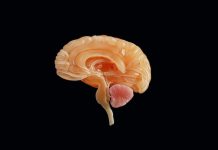
A novel smell and taste test developed by scientists is poised to transform Alzheimer’s diagnosis, allowing detection long before memory loss symptoms occur.
The groundbreaking screening, based on substantial evidence that loss of smell and taste are early signs of Alzheimer’s, promises to enhance diagnosis and treatment options.
The research, led by WMG at the University of Warwick in collaboration with Superlunary Labs, University Hospitals Coventry & Warwickshire (UHCW) NHS Trust, New-Food Innovation, and Alzheimer’s Society, intends to implement U.K.-wide screening services.
The public can undertake a simple test; those with poor performance can be referred for more extensive tests leading to early Alzheimer’s diagnosis.
Importance of Early Diagnosis
Early diagnosis is crucial, as new drugs, like lecanemab, can slow or even reverse Alzheimer’s progression if detected early.
Early detection using this test can aid in the timely administration of such drugs, enhancing the overall treatment regime.
The screening involves people discerning various flavors to smell and taste, determining distinctions in sweetness, astringency, and other flavor components.
It’s a non-invasive, rapid test that is a precursor to more comprehensive and invasive tests like MRI scans and spinal fluid tests, traditionally used to confirm Alzheimer’s.
The new technology utilizes accurately simulated flavor samples, dispensable via a user-friendly, affordable dispenser suitable for widespread use in care homes, pharmacies, community centers, and homes.
It can potentially be a part of annual health checks, conducted by nurses.
Impact on Healthcare System:
While still in the trial phase, the implementation of such inclusive mobile Alzheimer’s screening units could alleviate the pressure on the NHS and reduce waiting times for appointments with GPs.
Future Implications
If successfully implemented, this method can provide an early indication of Alzheimer’s, ensuring timely interventions.
The simplistic nature of the device and test is crucial for extensive data collection across varied age groups and demographics, opening avenues for comprehensive Alzheimer’s research and management.
Conclusion
The innovative taste and smell test is a breakthrough in Alzheimer’s research, offering a simple, early diagnosis method.
This development could significantly improve mass diagnosis and treatment of Alzheimer’s, ensuring that patients receive crucial interventions promptly.
This innovative approach aligns well with the advancements in Alzheimer’s treatment and can pave the way for an efficient, inclusive, and early diagnosis system.
Showcase
The research will be presented by the University of Warwick along with the Alzheimer’s Society at an All-Party Parliamentary Group (APPG) on dementia, hosted by Sir Jeremy Wright, MP for Kenilworth & Southam and vice-chair of the all-party parliamentary group on Dementia.
Comments
Dr. Richard Oakley from the Alzheimer’s Society highlighted the importance of such innovative methods for early diagnosis of dementia-related diseases, especially with the emergence of new disease-modifying treatments.
Malcolm Barnes of Superlunary Labs emphasized the simplicity of the device and test as being pivotal for collecting extensive data across diverse populations.
If you care about Alzheimer’s disease, please read studies that bad lifestyle habits can cause Alzheimer’s disease, and this new drug may help treat Alzheimer’s disease.
For more information about brain health, please see recent studies about a new early sign of Alzheimer’s disease, and results showing this brain problem can increase risk of stroke for up to five years.
Follow us on Twitter for more articles about this topic.
Copyright © 2023 Knowridge Science Report. All rights reserved.



